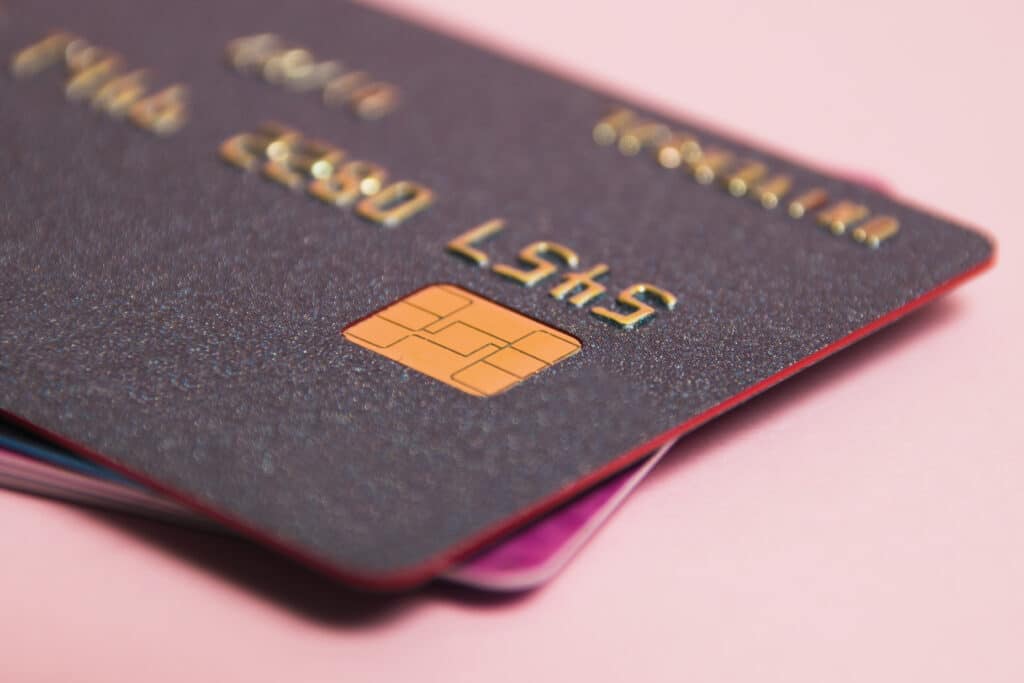Real Money Talks – Facing Up to More Debt as Life Gets Pricier
Imagine every time you go shopping, the prices have crept up just a little more. That’s what’s happening in America right now. With the inflation rate at 3.7% as of last month, families are feeling their wallets squeeze tighter. For some, credit cards have become a go-to to cover what their cash can’t.
Here at MoneyFit.org, we get that it’s tough when your money doesn’t stretch as far as it used to. We’re here to talk about it honestly, help you understand what’s going on, and find ways to deal with credit card bills that just keep growing.
We’re going to look at why people are using their credit cards more and what it means when those bills start to pile up. Then, we’ll show how Money Fit can help sort out credit card debt. We’re all about giving advice and support that can really make a difference.
So, let’s get to the heart of the matter and explore how rising costs are making us lean on our credit cards more than we’d like – and what we can do to get back on track.
The Economic Background
In the past five years, we’ve all noticed life getting more expensive. This isn’t just a feeling; it’s a fact that’s shown by something called the inflation rate. Back in 2018, the average inflation rate was about 2.4%. By 2021, it had almost doubled to 4.7%. In 2022, things got even tighter when the average jumped to 8.0%. Now, in 2023, we’ve seen it at 3.7%. These numbers tell us that prices are going up every year, and our dollars aren’t stretching as far as they used to.
This steady climb in prices means that every trip to the store can cost more than the last. And it’s not just about groceries. It affects rent, gas, electricity – almost everything. When prices go up but paychecks don’t keep up, it’s hard for families to stay on top of their bills. This is why many turn to credit cards as a quick fix to help cover costs, but the relief is temporary as the debt starts to grow.
Understanding how inflation has changed over the last few years helps us see the bigger picture. It’s not just about the price of milk going up, but about how all these increases add up over time, making it harder for people to keep up without borrowing more.
Credit Cards: A Double-Edged Sword
America’s relationship with credit card debt has seen dramatic ups and downs. In the last couple of years, it’s been more about the ups. By the middle of 2023, we hit a new high with over a trillion dollars in credit card debt—that’s the most ever recorded since 1999. This rise in debt comes after a significant increase of $175 billion since the end of 2021.
Different places tell different stories. In Connecticut, people have the highest average credit card debt, while Kentucky has the lowest. And in just one year, from 2021 to 2022, 25 states saw their average credit card debt shoot up by 10% or more.
Most telling is how we handle this debt. More than half of us can’t pay off our credit cards each month, and many say it could take over a year to get back to zero. This tells us that lots of us are leaning on credit cards more than we’d like, trying to keep up as life gets pricier.
Robert’s Struggle with Rising Costs
Meet Robert from Wilmington, Delaware. He’s a finance professional in his late 40s who, despite his expertise with numbers, found himself facing a $26,000 mountain of credit card debt. It wasn’t reckless spending but the unyielding tide of inflation that brought on this financial challenge.
For years, Robert and his wife managed their finances with precision—saving diligently and avoiding debt. But when inflation surged, the cost of essentials like groceries and gas soared. To add to their strain, his wife’s illness post-Covid recovery led to a loss of income that hit their budget hard.
The couple tightened their belts, cutting out luxuries and trimming their expenses down to the bare essentials. Yet, the gap between income and outgoings widened, and credit cards became their fallback for necessities, a choice that weighed heavily on Robert.
Accustomed to advising others on financial prudence, Robert now grapples with the stress of growing debt. He’s taken on extra work and continues to seek ways to cut costs, but the high interest on credit card balances makes progress feel agonizingly slow.
He’s aware of debt management services like Money Fit, but hesitance mixed with pride holds him back from reaching out. What Robert yearns for is not just a temporary fix but a strategy that genuinely acknowledges the ‘middle-class squeeze’—advice that resonates with his situation and offers a practical path out of the debt spiral.
For Robert, relief from crushing interest rates and tailored guidance through this economic labyrinth could be the lifeline he needs to reclaim his financial footing.

In Robert’s Words
Q: Can you walk us through how your financial situation changed when inflation started rising?
Robert: “Sure, it was like overnight, our money just didn’t go as far. We were doing fine, saving a bit even. Then, suddenly, everything cost more. We felt it the most with groceries and gas. It was a real shock to the system.”
Q: How did the higher costs affect your everyday budget and spending?
Robert: “It threw our budget out the window. We had to rethink everything we spent money on. The usual stuff—like eating out, little luxuries—it all had to go. Despite cutting back, the numbers just weren’t adding up.”
Q: What led you to rely more on credit cards?
Robert: “It was a mix of necessity and survival, really. When my wife fell ill and we lost her income, we were in a tight spot. The cards started as a bridge for the shortfalls, but it became a bit of a crutch over time.”
Q: How has this debt affected your stress levels and your view on finances?
Robert: “It’s tough. There’s a lot of anxiety. I’m in finance, so there’s this added pressure that I should’ve been able to avoid this. It’s a constant worry—how to pay it down, how to manage everything else. It can be overwhelming.”
Q: What steps have you taken to try and manage or pay off this debt?
Robert: “We’ve doubled down on budgeting, cut out all non-essentials, and I’ve taken extra work where I can. But the interest rates are a killer. You pay so much but the balance just doesn’t seem to budge much.”
Q: What’s your perception of nonprofit debt management services?
Robert: “They seem knowledgeable. I know they could probably help us make a plan, negotiate the rates maybe. I just… haven’t been ready to make that leap yet. It’s hard to ask for help.”
Q: What do you think would help you the most right now?
Robert: “If we could get some relief on the interest rates, that’d be huge. And advice that’s really tailored to our situation—none of the generic stuff. Real solutions for regular families feeling the squeeze.”
This interview with Robert provides a glimpse into the personal impact of inflation and rising costs on responsible individuals who find themselves in unforeseen financial distress. It emphasizes the need for empathetic, practical assistance that addresses the unique challenges faced by many during these economically challenging times.
Robert’s narrative is a sobering testament to the financial upheaval caused by inflation. Even as a finance professional, he was not immune to the pressures of rising costs which turned a stable financial situation into one burdened with $26,000 in credit card debt. The compounding factors of inflation and unexpected health issues created a perfect storm that forced Robert and his wife to turn to credit cards for everyday expenses. His story reflects a struggle shared by many, underscoring the urgency for personalized financial guidance and support to navigate through such challenging economic climates.
Money Fit: A Beacon of Hope
When the bills pile up, and the credit card debt seems insurmountable, it’s easy to feel like you’re in over your head. That’s where Money Fit comes in. As a nonprofit service specializing in credit card debt management, Money Fit provides a guiding light to those navigating the murky waters of debt.
Money Fit’s programs are designed to help reduce the overwhelming interest rates that keep people like Robert from making headway on their balances. By working with creditors, they may be able to negotiate lower interest rates and create a payment plan that consolidates monthly credit card payments into one more manageable amount.
But they don’t just stop at debt management. Money Fit also offers financial education to empower people to take control of their finances for the long term. They understand that each person’s situation is unique and offer personalized advice to help break the cycle of debt.
For those who feel like asking for help is a sign of defeat, Money Fit stands as a testament to the strength found in reaching out. They are not just a service but a partner in finding the path back to financial health.
Navigating Towards Financial Freedom
The journey toward financial freedom often begins in the choppy waters of debt, but with a compass in hand and a steady course, the distant shore is attainable.
Setting the Course with Assessment and Planning
The first step is to assess where you are: tallying up your debts, tracking your spending, and pinpointing your income. This financial self-awareness is the foundation upon which you can build a robust plan of action.
Budgeting: Your Financial Navigation Chart
Crafting a budget is like plotting your course on a navigation chart. It helps ensure that you prioritize essential expenses and allocate resources towards reducing debt. It’s your day-to-day guide to financial discipline and a reminder of the destinations you’re striving to reach.
Building an Emergency Fund: Your Safety Net
An emergency fund acts as a safety net for unexpected storms. Even a small fund can keep you afloat, preventing the need to borrow and adding to your debt.
Seeking Guidance: The Lighthouse in the Fog
Guidance can come from many sources. Money Fit provides a beacon of hope with its counseling services, shining a light on the path to better financial management. They can help you understand your options, including strategies for debt repayment and how to manage your finances without accumulating further debt.
Stay Informed: Charting Your Progress
Educating yourself on personal finance is crucial. Take advantage of the resources and tools provided by Money Fit to learn more about managing money, saving, and investing. Knowledge is power, and in the world of personal finance, it’s the power to make better, more informed decisions.
Continuing the Voyage
As you navigate through these steps, remember that reaching financial stability is a journey that requires persistence and resilience. Every step forward, no matter how small, is progress toward a debt-free life and long-term financial health. Stay the course, and you’ll find that with each passing milestone, the burden of debt becomes lighter, and the horizon of financial freedom grows clearer.
Overcoming Hurdles to Financial Help
For many, acknowledging the need for help to manage debt is a significant hurdle. It’s often seen as a personal failure, especially for those who, like Robert, have always taken pride in their financial savvy. However, it’s crucial to recognize that seeking assistance is a proactive step toward regaining financial control.
Money Fit’s nonprofit debt management services provide a confidential and judgment-free zone where individuals can seek help without fear of stigma. They offer a holistic approach to debt management, which includes not only negotiating with creditors to lower interest rates but also providing financial education tailored to individual needs.
Section 9: The Final Word – Empowerment Through Action
Taking the first step towards debt management can be the most challenging part, but it’s also the most empowering. Money Fit encourages individuals to take that step with the understanding that they’re not just getting help with their debt—they’re also investing in their financial education and future stability.
By turning to a trusted nonprofit for help, you can learn to navigate the financial waters, no matter how choppy they may get. Whether it’s through negotiated debt repayment plans, financial education, or just a listening ear, services like Money Fit aim to empower individuals to not only emerge from debt but to thrive beyond it.
In the end, the journey toward financial freedom is as much about changing your relationship with money as it is about changing the numbers in your bank account. It’s about finding peace of mind and the confidence to manage your finances proactively. Money Fit stands ready to help individuals embark on this journey, providing the tools and support necessary to chart a new course towards a secure financial future.
References
- U.S. Bureau of Labor Statistics. “Consumer Price Index.” Available at: https://www.bls.gov/cpi/
- Federal Reserve Bank of St. Louis. “Total Credit Card Balances in the U.S.” Available at: https://fred.stlouisfed.org/series/REVOLSL
- Experian. “State of Credit Card Debt in the U.S.” Available at: https://www.experian.com/blogs/ask-experian/research/credit-card-debt-study/
- Money Fit by DRS. “Credit Card Debt Management Services.” Available at: https://www.moneyfit.org/debt-relief-services








